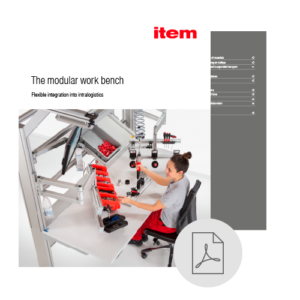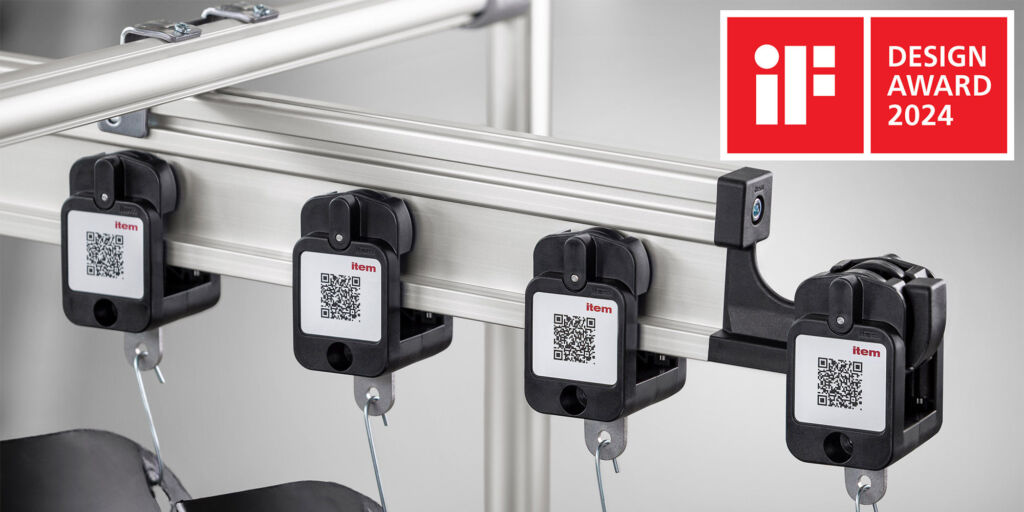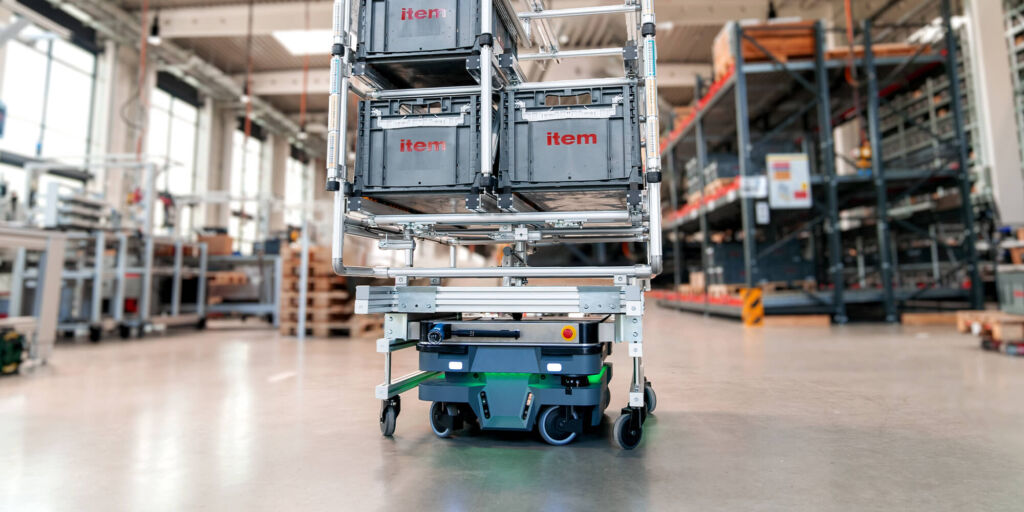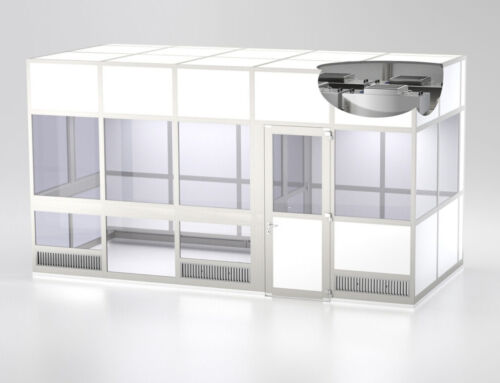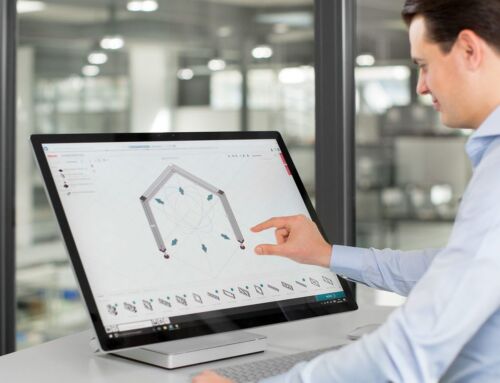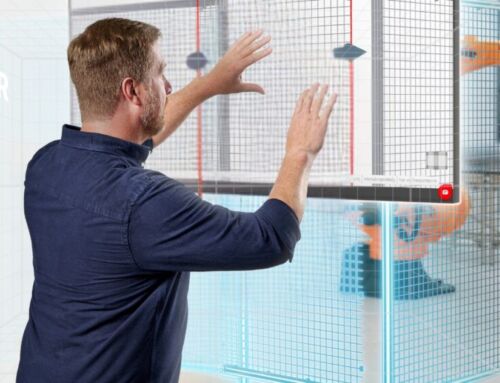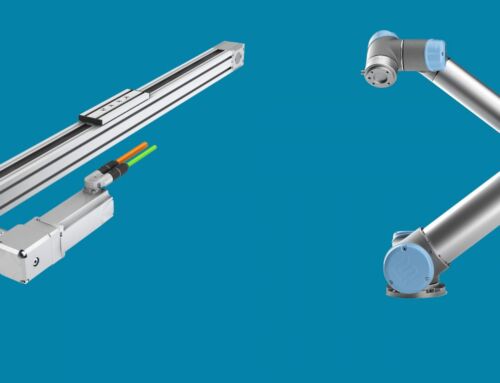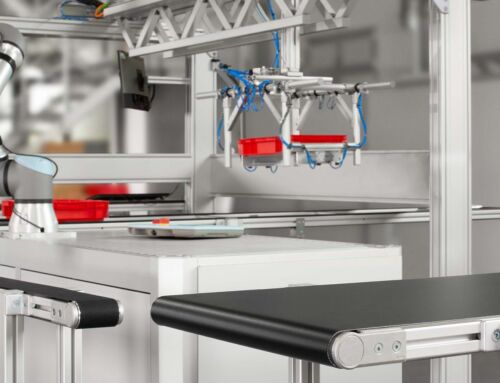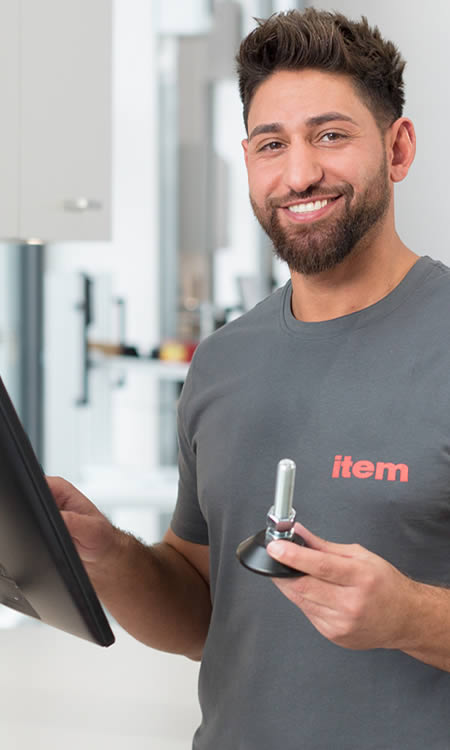What if the workplace could adapt to the people working there – and not the other way around?
A worker stands at their assembly work bench and performs the same movements over and over again. These processes are a firmly established part of their normal working day. This daily routine is not without consequences, however. The worker has to stretch slightly to reach their materials – and their shoulder aches post-shift. We shouldn’t wait until something goes wrong before paying attention to health – and this is exactly where ergonomics comes in. Ergonomics is all about optimizing the way people work, with the aim of protecting employees’ health and boosting productivity. As such, ergonomics is an important sub-area of environment, health and safety (EHS). The focus of EHS is on a whole range of factors that affect the workplace. Today we’ll be providing you with a brief introduction to EHS and explain how you can become an advocate of ergonomics and raise awareness of this concept among your staff.
Modular work benches: Benefits, tips and solutions
Boost the flexibility and efficiency of your production environment with modular work benches. In our free guide, find out how you can dynamically adapt your production operations to suit changing needs of both employees and processes.
What is EHS (environment, health and safety)?
EHS – environment, health and safety – is a concept designed to boost environmental awareness, promote staff health and enhance occupational safety in companies. As the name suggests, it consists of three key components:
- Environment: Protecting natural resources through measures such as waste management, energy efficiency, reducing emissions and complying with environmental standards.
- Health: Promoting employees’ physical and mental health by means of ergonomic workplace design, prevention schemes and the safe handling of hazardous substances, for example.
- Safety: Preventing occupational accidents and avoiding health risks through measures such as risk assessments, training, contingency plans and personal protective equipment.
EHS aims to create a safe, healthy and sustainable working environment, ensure compliance with legal requirements, and minimize risks to people and the environment over the long term. Equally, the three key components of EHS are closely interlinked. For example, an ergonomic work bench helps prevent occupational accidents because reducing the physical and mental strain on staff lowers the risk of accidents. In contrast, environmental influences such as harmful substances, poor air quality and noise have an adverse effect on staff wellbeing.
Setting up ergonomic work benches
A basic distinction is made between environmental ergonomics and behavioral ergonomics. The focus of environmental ergonomics is on the design of equipment and the working environment, whereas behavioral ergonomics is all about employee behavior. Environmental ergonomics is also the basis for everything else. “In terms of the work process, it is really crucial that the equipment is suitable. Otherwise, even the most exemplary ergonomic behavior will not lead to success,” says Marius Geibel, who is a product manager and ergonomics expert at item.
What are the important points to bear in mind when it comes to ergonomic work bench design for manual production? Features such as those offered by the modular item Work Bench System are particularly important:
- Flexibly adjustable work benches: Choose work benches that can be flexibly adjusted to suit workers of different heights and body shapes performing a variety of tasks.
- Height-adjustable work benches: This feature enables workers to switch between sitting and standing, which eases strain on the body. Ideally, workers should be able to save their preferred height setting for the work bench and retrieve it at the start of their shift.
- Ergonomic chairs: Chairs should be height-adjustable and enable workers to sit dynamically – in other words, change their position and posture frequently. An ergonomic chair therefore prevents one side of the body being overworked or excessive strain being put on specific muscle groups.
- Correct use of the handling area: Tools and materials that are used frequently should be within easy reach inside the handling area. The handling area is the part of a work bench where staff can reach every point vertically or horizontally with one or both hands, without having to move out of their sitting or standing position. Shorter reaching distances boost productivity.
- Use of pivot arms: Use pivot arms to keep materials and tools in easy reach. They help tailor the working environment to the user’s physical needs by keeping everything close to hand – whether parts containers, trays and crates for components to be processed or hooks, holders and containers for tools and equipment.
- Note: To help you decide which ergonomic equipment to opt for, the Campaign for Healthy Backs (AGR) e.V. recommends independently certified products that meet strict health protection requirements.
Geibel is in no doubt about the importance of ergonomic work bench design. “It’s really important to emphasize that we’re not talking about some sort of oasis of wellbeing here. Ergonomics is a highly relevant concept. If it means you reduce the number of sick days even by just one day per worker, the cost savings are enormous. There’s another factor, too, although it’s one that’s difficult to measure – workers simply feel better. Last but not least, this also results in noticeable increases in the efficiency of manual processes,” he explains.
Environment, health and safety (EHS): raising staff awareness of ergonomics
It’s also really important that you get staff on board with ergonomics – only when they accept and actively apply the principles can the concept be properly established in the company. From an EHS perspective, it’s a good idea to make ergonomics a standard element of the induction process for new members of staff. However, this is not enough on its own. “It’s especially important to win over employees who have been with the company for many years. Of course, this can prove challenging. You can’t simply lay down the law and say: ‘We have new chairs now – and you must use them.’ It’s much more important that you get everybody in the team to share that sense of responsibility from an early stage,” Geibel explains. It’s therefore helpful if you can find members of staff who will advocate ergonomics and spread the word.
You should choose production employees to spread the word about ergonomics. The aim is for them to share their know-how with their colleagues and get them enthusiastic about the concept, too. If staff get the feeling that their opinion matters, acceptance of ergonomic measures rises. Workshops offer a particularly suitable setting for this – they are an ideal format for openly reaching agreement on which specific ergonomic chair should be purchased, for example. When a certain model (ideally with an AGR certificate) is picked, then those involved in the discussions feel they’ve had a stake in the decision. They have been actively involved and feel they have been taken seriously, so use the purchased chairs with much greater awareness.
Ergonomics: part and parcel of corporate structure
“The workplace is not just somewhere you work – it’s an important part of your life. It’s important to emphasise to staff that they themselves can actively influence how physically healthy they will be in 10 or 15 years’ time,” Geibel insists. Ergonomics should not be regarded as a short-term measure, but instead as an integral part of the corporate culture.
There are various steps you can take to achieve this. For example:
- Provide visual reminders: Posters or information sheets such as our “fit@work” PDF make ergonomics easy to grasp. These should be practical, with an attractive design, rather than didactic in nature.
- Make movement part of the daily work routine: Increasingly, ergonomic exercises are being integrated into the regular working day, especially in larger companies. This can include digital reminders (e.g. about body posture) at the workstation or short active breaks complete with ergonomic exercises.
- Use online formats: Our free item Academy offers training modules, including one called ”Ergonomics”, which people can work through flexibly and repeat at any time.
Another key factor in people’s acceptance of ergonomics is the fact it can be measured. You can therefore provide a comparison that clearly demonstrates the positive impact that ergonomics has on health. The scalefit solution offers an ideal way of doing this. “With our INDUSTRIAL ATHLETE sensor-based measurement system, we visualize key risk factors such as forces, awkward postures and repetitions. Based on objective load measurements, we also provide the basis for developing ergonomic workplace systems,” explains Dr Frank Emrich, Managing Director of scalefit. Watch the following video to see a direct comparison of an item ergonomic work bench with a conventional one:
FAQs: Ergonomics as a part of EHS
What is EHS – and what role does ergonomics play in this context?
EHS is a concept designed to promote environmental protection, health, and occupational safety. Ergonomics is a vital element of health – it actively helps to reduce physical strain, psychological stress, and occupational accidents
Why is ergonomics so important in production?
Repetitive movements that put strain on the body can cause health problems in the long term. An ergonomically designed work bench protects workers, increases productivity and reduces the number of sick days.
What’s the difference between environmental ergonomics and behavioral ergonomics?
- Environmental ergonomics is about optimizing the physical working environment (e.g. tables, chairs, handling areas).
- Behavioral ergonomics is about encouraging healthy behavior (e.g. taking breaks, changes in posture, movement).
Environmental ergonomics and behavioral ergonomics go hand in hand – after all, if you don’t have the right equipment, even the most exemplary behavior will have little effect.
What are the key elements of an ergonomic work bench?
- Individually adjustable work bench components
- Height-adjustable work benches
- Ergonomic chairs that enable staff to sit dynamically
- An optimized handling area so that unnecessary movements can be avoided
- Pivot arms for the flexible arrangement of tools and materials
What are the best ways to raise staff awareness of ergonomics?
- Making ergonomics part of the induction process and involving staff who have been with the company for longer
- Getting staff members on board who will spread the word about ergonomics
- Running workshops to get staff actively involved in selecting equipment
- Strengthening the sense of community by encouraging active participation
How can you make ergonomics part of the corporate culture?
- By sending out clear messages – health isn’t a luxury, but rather a basic requirement for good performance
- By continuously drawing attention to ergonomics, e.g. through information sheets, digital reminders or short active breaks
- By offering easy-access options, such as online training modules in the item Academy
- Through the commitment of managers and managerial support
Can ergonomic loads be measured?
Yes, by using systems such as INDUSTRIAL ATHLETE from scalefit. These systems use state-of-the-art technology to analyze and visualize movements and stresses on the body, so objective evidence of ergonomic improvements can be provided.
Are you interested in ergonomic work benches in production? Then we have something that is right up your alley! Simply subscribe to the item Blog by completing the box at the top right.
